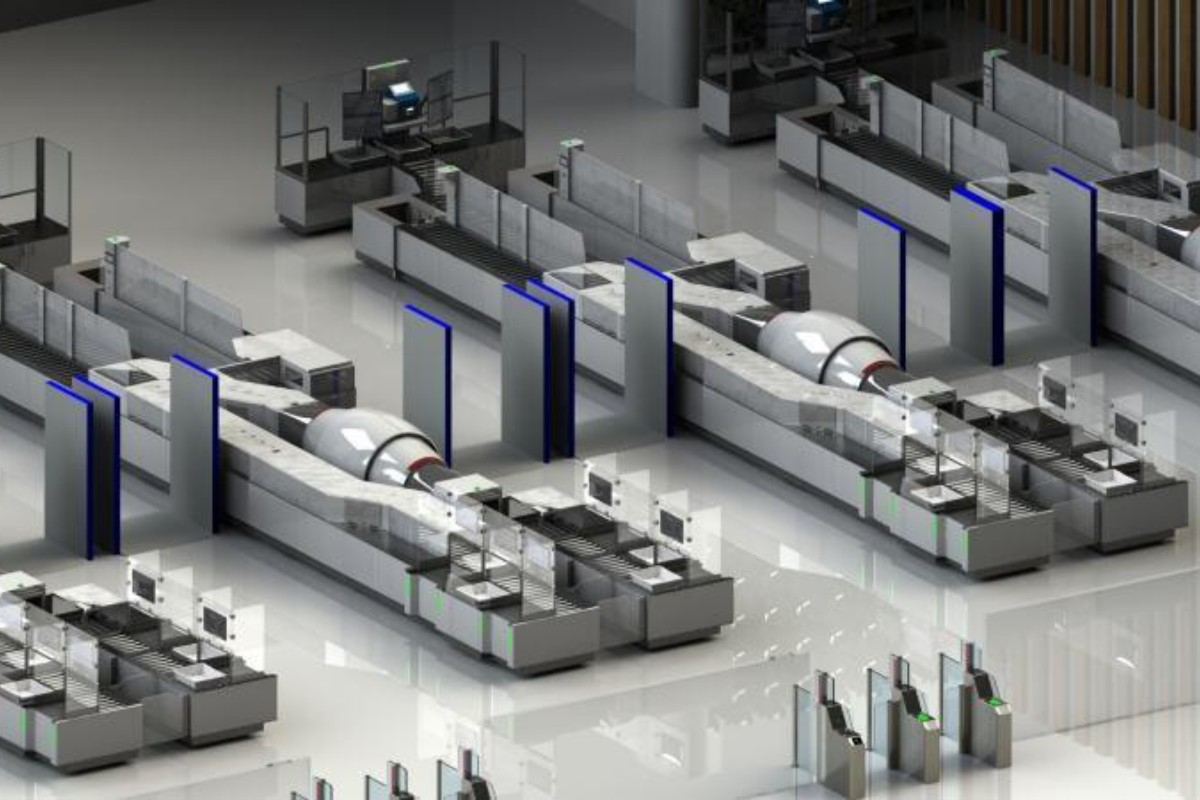
The Department of Homeland Security says it’s ready to test self-service airport security screening lanes early next year with the first pilot set to get underway at Las Vegas Airport as early as January 2024.
The trial will use a prototype self-service security screening system developed by Vanderlande, one of the world’s largest suppliers of airport security checkpoints, and will initially be reserved for TSA PreCheck passengers.
The Vanderlande system integrates four self-service stations into one checkpoint lane. At each station there’s a video screen that will display step-by-step instructions and replace the role of TSA security officers barking orders at passengers.
Once passengers have placed all their items in a bin, they’ll winter the x-ray arch with automated entry and exit gates. If they initially fail the scan, they’ll have the opportunity to remove any items from their pockets and again try an automated scan.
If a passenger does get stuck, however, they’ll have access to a help button which will connect them with a real life security officer.
Earlier this year, the Vanderlande system was installed at Ronald Reagan Washington National Airport, although its only ever been used for ‘simulated’ real world cases involving volunteer passengers.
Vanderlande may have won the initial race to real-world implementation, but several other companies are contributing to an ongoing project by the DHS’s Science and Technology Directorate.
Through the ‘Screening at Speed’ project, Micro-X and Voxel Radar are also helping to develop new self-service screening technologies, including an individual pod-based design that might even include small CT scanners.
Meanwhile, Voxel is working on in-motion panel sensors that can line walls or curved surfaces so that passengers can be effectively screened as they walk through the checkpoint without stopping – much like the technology imagined in the 1990 Arnold Schwarzenegger film Total Recall.
“The airport security experience that we’ve all come to know could soon look and feel a lot different—in a very good way,” commented Christina Peach, Branch Manager for the TSA ITF.
“We are very excited to see how far these capabilities have come in a relatively short amount of time,” Peach continued.
Meanwhile, Screening at Speed Program Manager Dr. John Fortune says self-service passenger screening is a win-win for everyone. Dr Fortune says self-service screening is not only potentially faster than traditional security screening but that it will cut down the number of invasive pat-down searches and manual bag searches.
As for security officers, Dr Fortune says they have so far welcomed the self-service technology because it reduces person-to-person contact and manual handling of heavy luggage.
Now it’s time to test the concept the real life.
Related
Mateusz Maszczynski honed his skills as an international flight attendant at the most prominent airline in the Middle East and has been flying ever since... most recently for a well known European airline. Matt is passionate about the aviation industry and has become an expert in passenger experience and human-centric stories. Always keeping an ear close to the ground, Matt's industry insights, analysis and news coverage is frequently relied upon by some of the biggest names in journalism.







